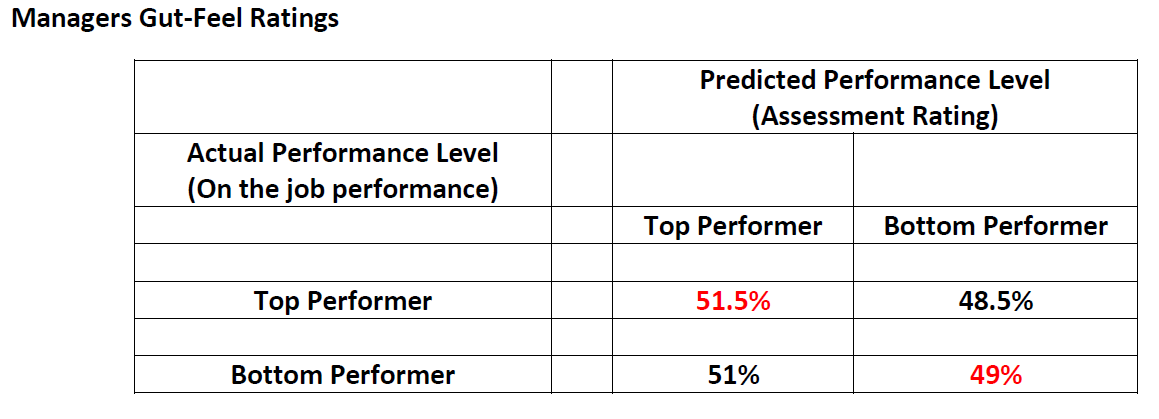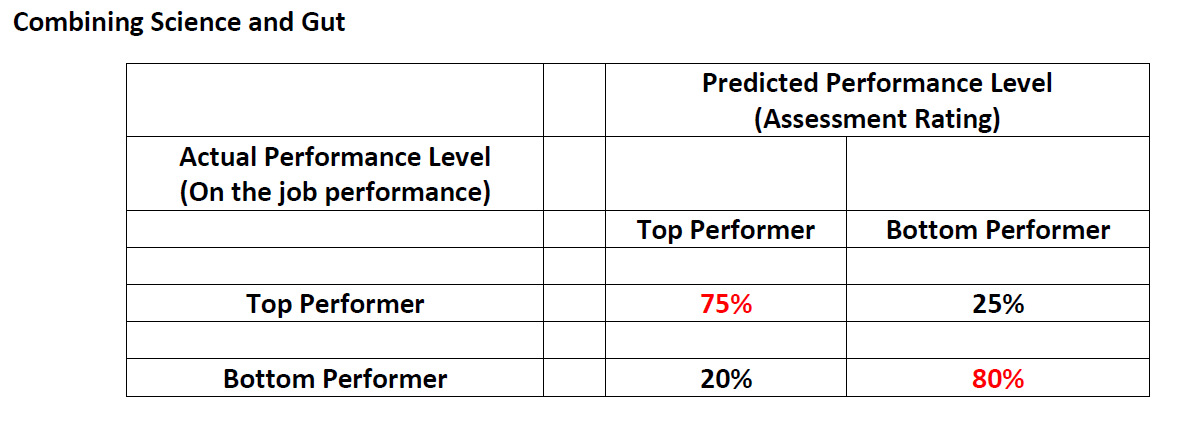As an assessment firm with over 43 years of experience, one of the most frequent challenges we see from hiring managers is the belief that they can identify top performers more accurately than our assessment.
On several occasions we have put this hypothesis to the test.
This blog will test the SCIENCE vs GUT hypothesis by illustrating the importance they both bring to the selection process & how to incorporate and leverage them as part of a Best Practices Talent Strategy.
A predictive data point is one that possesses strong discriminant validity. This means that it can clearly discern between top and bottom future performers. Below are the predictive properties of both a psychometric assessment and sales managers’ subjective ratings.
***Each graph represents the percentage of candidates that were predicted correctly to be either top or bottom performers by the rating data point

Overall, the validated assessment was 70% correct when classifying recruits as either future top or bottom performers.

Overall, sales managers were roughly 50% accurate in predicting a recruit’s future performance trajectory.
As independent predictive data points, the objective rating generated from a validated psychometric assessment tool was significantly more accurate. Remarkably, when it came to future low performers, the assessment was 75% accurate by itself, knowing nothing else about the candidate. Such a finding reinforces the critical importance of possessing essential role-specific competencies on future success, and more importantly, assessing them as part of the selection process.
The slight drop in the predictive accuracy of the assessment tool’s rating on top performers can be explained by factors outside the scope of the assessment. Factors such as previous experience, hard skills and the candidate’s attitude, all significantly mitigate the likelihood that the candidates will be able to leverage their natural inherent potential as identified by the assessment. What becomes obvious here is that this type of information is picked up by the hiring manager both consciously and unconsciously throughout their interactions with the candidate. This is why having both sources of information is so valuable and important to the accuracy of the final selection decision.

By including both science and “gut-feel” into the overall rating process, we see a significant increase in the predictive accuracy associated with identifying future top performers. The objective and analytical nature of the assessment tool accurately categorizes candidates’, while the hiring managers’ experience and “gut-feel” ultimately help filter the middle candidates (i.e., less clear as to whether they will be future high / low performers), into their eventual proper categories. Consequently, this is why the “best practices” selection processes leverage both art and science.
Stay tuned for our next blog installment which will highlight Self Management Group’s world renowned Selection Rater process.

